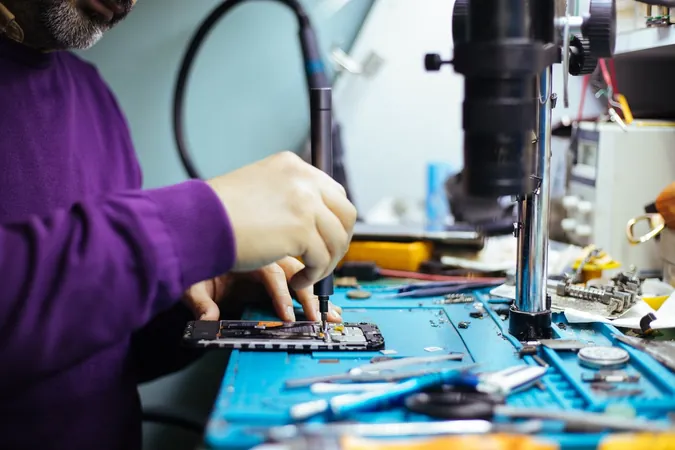
Apple Launches iPhone 16 Replacement Parts: A New Era for DIY Repairs!
2024-11-11
Author: Siti
If you've recently dropped your iPhone 16 and cracked the screen, you're in luck! Apple has officially started selling replacement parts, including cameras, displays, and batteries, for its latest smartphone model. This move marks a significant shift for a company that has long maintained strict control over device repairs. Under pressure from advocates for repairability, like iFixit and numerous environmental groups, Apple is finally recognizing the value of allowing customers to repair their own devices.
Costs Associated with Repairs
Here’s the breakdown of the costs associated with repairing your iPhone 16: if you need a replacement camera assembly, it will cost you $169 for the standard model and $249 for the Pro and Pro Max versions. Displays are priced between $279 and $379, depending on the specific model and size. Need a new battery? That’ll be $99 for the standard iPhone 16, or $119 for the Pro model; however, if you return your old battery, you can save around $60 on the Pro. The returns policy can further reduce the cost of repairs, as each returned item may earn you credit towards the replacement. Be sure to check Apple's official site for complete pricing details.
DIY Repair Solutions
For those who lack the specialized tools for DIY repair, Apple has a solution: the company will rent you the same battery repair devices that its internal technicians use, making it easier than ever to carry out repairs at home.
Apple's Shift Towards Repairability
Since the launch of its self-service repair program in 2022, Apple has gradually opened up its extensive ecosystem of parts, tools, and manuals for customers looking to fix select iPhones and Macs. Historically, the company limited repairs to authorized technicians only, justifying this approach by claiming it protected customers from causing accidental damage and preserved Apple's brand reputation. However, this restrictive policy contradicted its stated commitment to sustainability. By putting repairs out of reach for many, Apple inadvertently pushed consumers toward a "buy new" mentality, rather than a lifecycle approach to device usage.
Trends in Consumer Behavior
Consumers are increasingly keeping their devices longer before upgrading, and this trend is being reflected in Apple’s new strategy to support more affordable third-party components. By making repairs more accessible, Apple aims to extend the lifespan of devices that many users feel remain fully functional aside from a broken part.
Apple's Revenue and Services Strategy
Despite the durability of Apple’s devices, which undeniably boosts their value, the company has experienced revenue dips as customers are upgrading less frequently. In response, Apple is doubling down on its services strategy, pushing subscriptions like Apple One and more recently, unveiling Apple Intelligence—an innovative suite of artificial intelligence tools integrated into iOS. This initiative is intended to entice users to upgrade to the iPhone 15 or newer models.
Conclusion
With this shift toward providing repair services and pushing new technologies, it's clear that Apple is adapting to the evolving consumer landscape—one where sustainability and repairability are becoming as important as cutting-edge innovation. So the question remains: will you roll up your sleeves and tackle your iPhone 16 repairs, or will you let Apple do it for you? Either way, the choice is now in your hands!


 Brasil (PT)
Brasil (PT)
 Canada (EN)
Canada (EN)
 Chile (ES)
Chile (ES)
 España (ES)
España (ES)
 France (FR)
France (FR)
 Hong Kong (EN)
Hong Kong (EN)
 Italia (IT)
Italia (IT)
 日本 (JA)
日本 (JA)
 Magyarország (HU)
Magyarország (HU)
 Norge (NO)
Norge (NO)
 Polska (PL)
Polska (PL)
 Schweiz (DE)
Schweiz (DE)
 Singapore (EN)
Singapore (EN)
 Sverige (SV)
Sverige (SV)
 Suomi (FI)
Suomi (FI)
 Türkiye (TR)
Türkiye (TR)